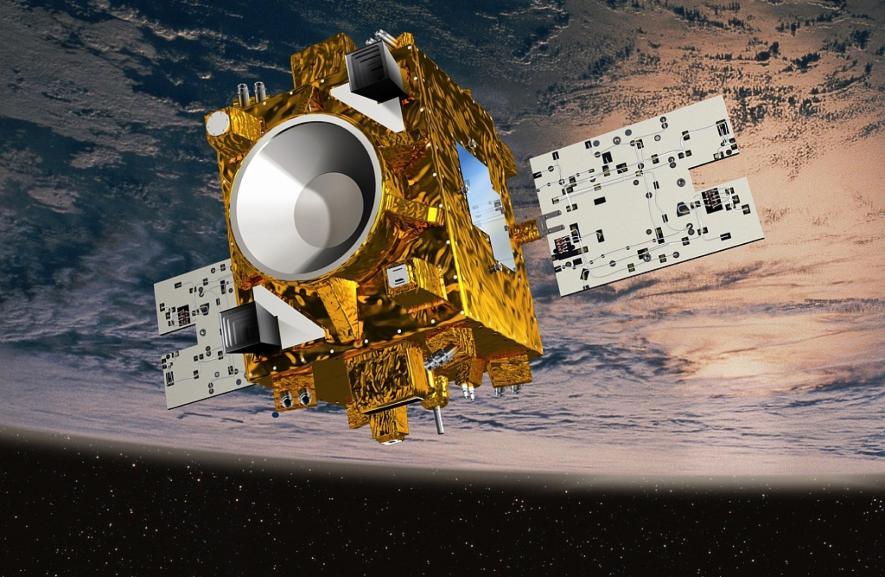Latest Experimental Results Provide Most Precise Test of General Relativity Theory’s Key Component

Image source: Sci.News; used for representation only.
New Delhi: Can a feather and a heavy ball fall at the same rate under gravity? Well, Einstein said it could in his theory of general relativity. At present, researchers have been able to obtain the most precise test in favour of the Weak Equivalence Principle, one of the key components of the general theory of relativity. The results have been published in the journals Physical Review Letter and Classical and Quantum Gravity.
The test was conducted in a new space-based experiment in the MICROSCOPE satellite. MICROSCOPE, the European satellite was launched in 2016 with an aim of proving the Weak Equivalence Principle formulated by Albert Einstein. The Weak Equivalence Principle, to put in simple words, says that gravity is universal. Whatever an object is, be it a stone or a cotton ball, it will accelerate at the same rate under a gravitational field. However, this phenomenon, in a remarkable theory, was demonstrated by none other than Galileo Galilei some 400 years back. It is said that Galileo dropped two spheres of different masses from the top of the Leaning Tower of Pisa and found them to drop at the same time. However, experts also have a different opinion on it saying that it was one of the thought experiments conducted by Galileo. Scientists have followed this tradition by experimenting with this principle in various conditions. The Weak Equivalence Principle of Einstein’s theory of general relativity also resonates with this.
Eugene Lim, a theoretical physicist at the King’s College, London, in a statement to Science remarked on the latest findings, “it’s really good to have Einstein’s theory confirmed with such high precision. The results aren’t surprising, but these kinds of experiments could help physicists narrow down future gravitational theories that fit with quantum theory and better predict how black holes behave.”
The MICROSCOPE satellite contains a chamber inside which has a series of cylinders that are electrically charged and made up of platinum and titanium alloy. The platinum and titanium alloy test masses also orbited the Earth along with the MICROSCOPE satellite. The researchers monitored the acceleration of the alloy test masses as they orbited the Earth with the satellite. The experiment involves complicated calculations and set-up. However, the main objective of this was to find something called the Eötvös ratio, which is a means to relate the acceleration of two bodies falling freely under gravity. This technique can relate the accelerations of the two free-falling objects to such a precision that if anyone’s acceleration differs from the other by even a part in 1015, it will be detected. This difference will be marked as a deviation from the Weak Equivalence Principle. The rate of acceleration of the two alloy test masses remained equal throughout the experiment, as the researchers reported.
Now, a question arises here. The alloy test masses were orbiting with the satellite. Then how come they are free-falling? A spacecraft in orbit does not get out of the reach of the Earth’s gravity. If it does so, it would fly off in a straight path. In fact, it is only gravity that holds the spacecraft in orbit. As the craft is orbiting, it is actually falling. Space is a vacuum as beyond the atmosphere of Earth, there remains no air to lift or drag it. In this condition, gravity remains the main force. Again, any object that moves under the influence of gravity alone is said to be in a state of free falling (NASA). That’s why the MICROSCOPE satellite and so as the alloy test masses are in the free falling state.
The researchers finding that the alloy test masses don’t differ in their acceleration with a super precision (as in calculating the Eötvös ratio) is a confirmation that objects of different masses fall at exactly the same rate under gravity. This in turn is a confirmation of the Weak Equivalence Principle of Einstein’s theory of general relativity.
Get the latest reports & analysis with people's perspective on Protests, movements & deep analytical videos, discussions of the current affairs in your Telegram app. Subscribe to NewsClick's Telegram channel & get Real-Time updates on stories, as they get published on our website.





















